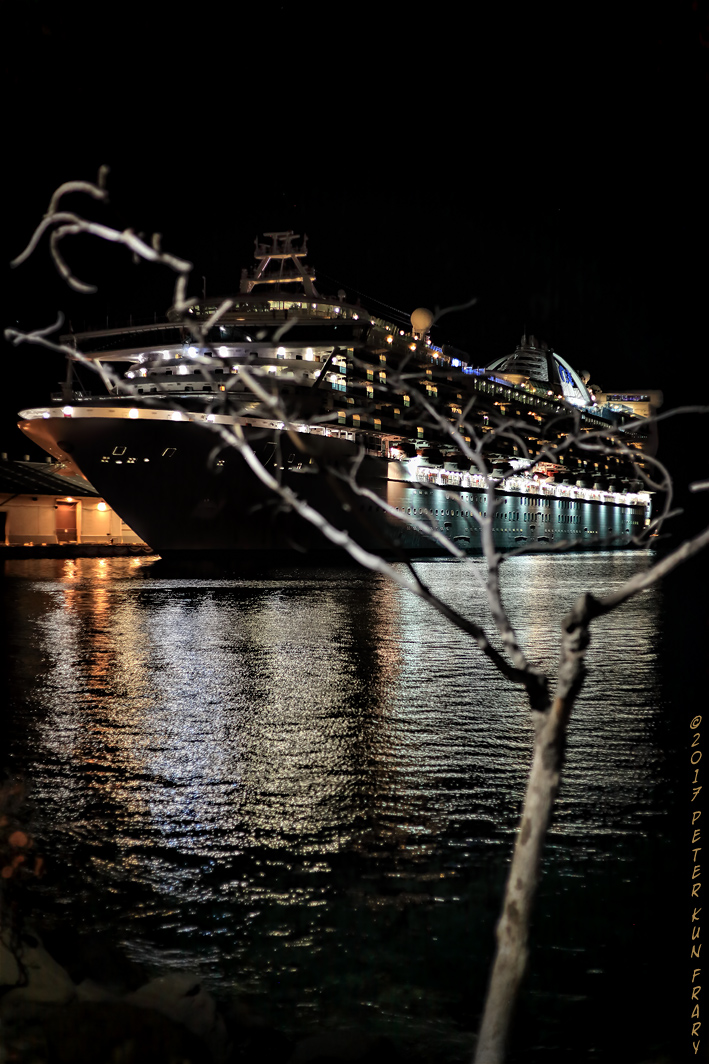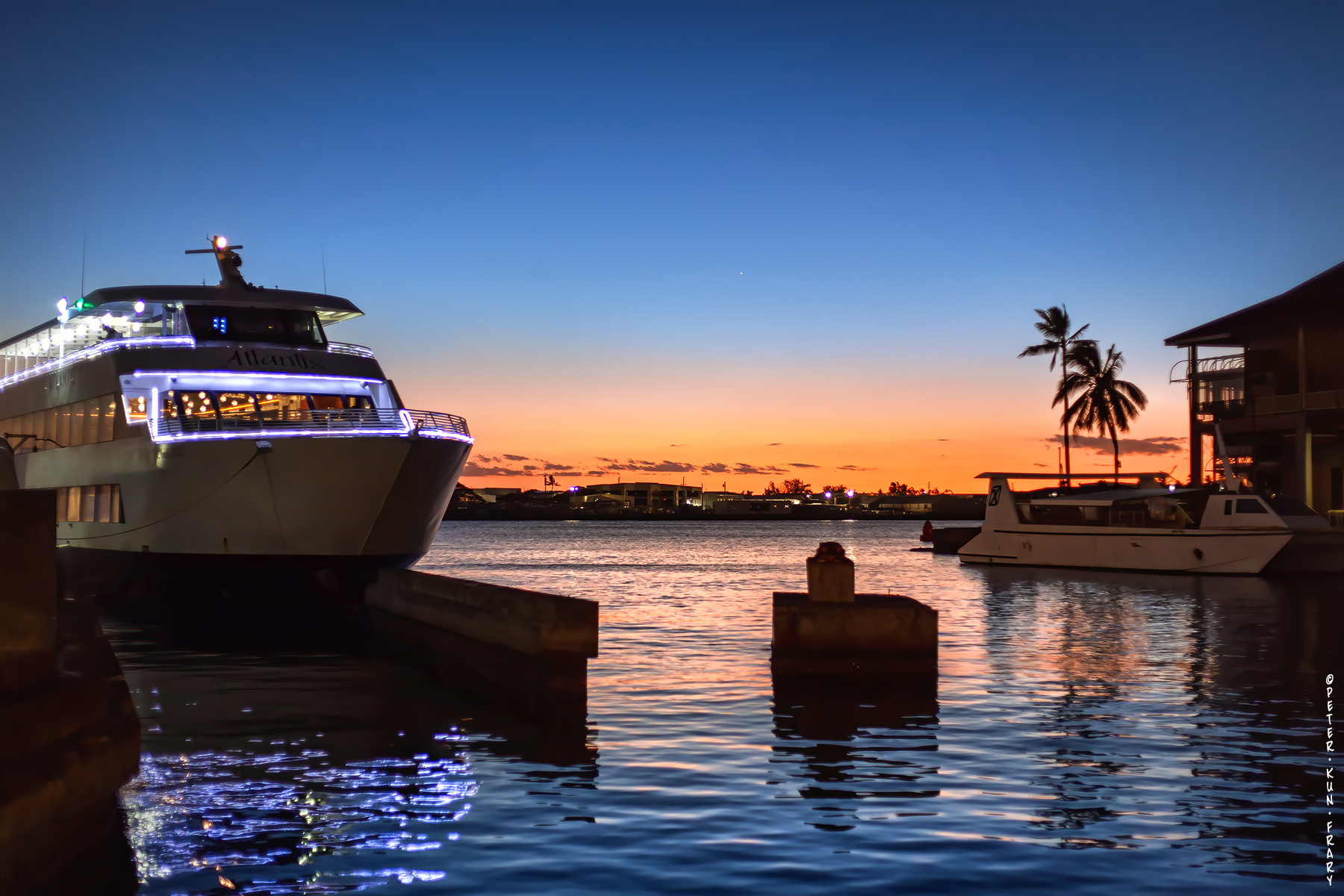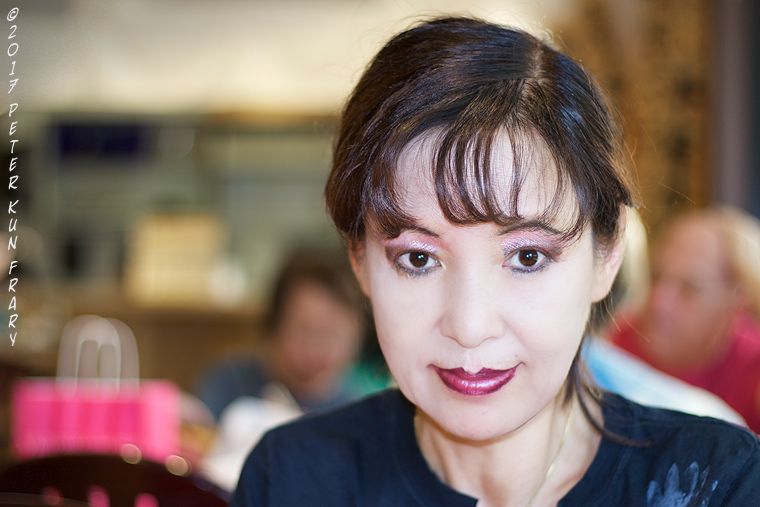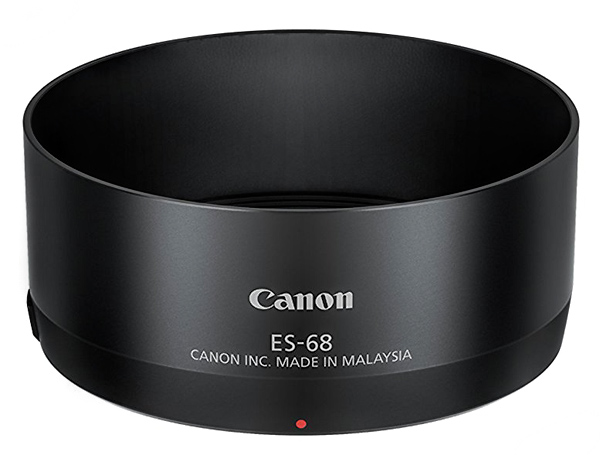•.
Canon
EF 50 1.8 STM
Normal Lens on a Budget
Peter
Kun Frary
.
•
Why buy a prime—single focal length lens—when most zooms include 50mm? Even the slowest 50mm primes feature apertures of F1.8 to 2.0, fast enough to shoot without flash in candle light, and yet are among the smallest lens designs. Zooms, in contrast, tend to have slow variable apertures and are heavy and bulky. The fast aperture of a 50mm prime results in a bright viewfinder, another desirable trait for dim conditions. Plus, the smooth bokeh of a fast prime helps make portrait subjects pop. Here are my thoughts on Canon's humble EF 50 1.8 STM after a couple years of shooting.
Nu'uanu Valley | EOS 6D and EF 50 1.8 STM at F4.5

This review consists of my opinions and observations as a hobbyist. No scientific measurements, MFT charts or pixel peeking comparisons will be found here.
 Compatibility Compatibility
The EF 50 1.8 STM lens works on all Canon EOS DSLR cameras, both full frame and APS-C (1.6X), such as the EOS 6D and Rebel SL3. It will also work on EOS R and M series mirrorless cameras with a mount adapter. It does not fit non-Canon cameras such as Pentax, Nikon, Fuji, etc.
 Construction Construction
The EF 50 1.8 STM is slightly smaller and heavier than the prior model, the EF 50 1.8 II, aka nifty-fifty, but with significantly better build quality. Improvements include metal mount, sturdier barrel and AF/MF switch, larger focus ring, grippy matte finish and stepping motor (STM). Although construction has improved, this is still a bare bones design: no image stabilization (IS) and lacking both distance scale and DOF markings. It also uses an odd filter size, 49mm, rather than 52 or 58mm common to most small Canon lenses.
Canon EF 50 1.8 STM | Photo courtesy Canon Inc.

 Image
Quality Image
Quality
The EF 50 1.8 STM has the same optical design as the prior nifty-fifty, but with improved lens coatings and close focus ability. Wide open my sample is sharp center frame, sharper than old my nifty-fifty and EF 50 1.4 USM, but soft and dark (light falloff) in the periphery—perfect for dreamy portraits but not so great for landscapes and night skies. On APS-C cameras—90D and Rebel—corner darkening and softness aren't noticeable since nearly half the image circle is cropped out. Corners improve considerably by F2.8 and light falloff is gone by F4. On full frame, optimal sharpness across the frame falls between F5.6 and F8.
My old nifty-fifty wasn't usable wide open and didn't get decent until F2.8. So although the optical formula is the same as the prior nifty-fifty, Canon's quality control went up a notch with this lens (or I got a good one!).
Ship at Dock | EOS 5D MKII & EF 50 1.8 STM at F2.0 | Coma is well controlled center frame even at F2.0. Periphery lights exhibit bloom and coma but improve as stopped down.

CA
Chromatic aberration (CA) is nearly nonexistent with this lens. I wasn't inclined to use the CA sliders once even in high contrast situations. On the other hand, wide open it's prone to flaring when a bright light is in the frame but almost flare-proof by F2.8. Canon's Super Spectra Coating (SSC) update appears to be doing its job.
Coma
One of the things that really burned me about my nifty-fifty and EF 50 1.4 USM was heavy coma at larger apertures, rendering streetlights as blazing comets. Coma is still present in the EF 50 1.8 STM but reduced so distant points of light look like, well, distant points of light once stopped down to F4 or more. Specifically, the center is good wide open with periphery improving progressively as stopped down. So not a great lens for astro shooters but okay for city nightscapes at F2.8 and smaller.
Navatek at Dock | EOS 6D and EF 50 1.8 STM | F2.0, 1/40, ISO 400

A quasi-macro minimum focus distance of just under 14 inches is 4 inches closer than the prior model, close enough for medium sized flowers. However, like the nifty-fifty before it and the EF 50 1.4 USM, it exhibits noticeable barrel distortion at two meters and nearer. No biggie for flowers but not pleasing for architectural details like doors and windows. At normal distances distortion isn't apparent. Of course, a few clicks in Photoshop, LR or Canon's DPP corrects distortion.
Quasi Macro | EOS 5D MKII & EF 50 1.8 STM at F4 | Minimum focus distance is just under 14 inches (.21x).

Bokeh
I love the soft whirl of a defocused background, and the seven-blade diaphragm of this lens does not disappoint. Coupled with a large aperture, the EF 50 1.8 STM renders smooth bokeh and pleasantly round highlights. Smooth bokeh combined with a pin sharp subject center frame really make subjects pop. This a great portrait lens for APS-C cameras like the Rebel or 80D.
Portrait Bokeh | EOS SL1 & EF 50 1.8 STM at F2.8 | Backgrounds are nicely defocused even at F2.8.

 Focus Focus
Auto Focus
AF speed and reliability are markedly better than the nifty-fifty, but slow compared to a ring-USM zoom like the EF 24-105 4L IS USM. Focus is accurate and rarely misses even in low light. Focus is achieved by front element extension (nested barrel). The STM motor is quieter than the prior model, albeit not silent, emitting a high pitched "heeek" audible in a quiet room. In fairness, the volume level is pianissimo and will not be noticed on the street or in a room with normal conversation levels.
Video AF on a 80D is buttery smooth and great for touchscreen pulls and Movie Servo. Focus noise, while low volume, is recorded by built-in camera mics during quiet video clips. The workaround is to use an external mic or prefocus.
Manual Focus
Manual focus (MF) is accomplished via focus-by-wire: the ring merely activates the focus motor and is not mechanically coupled to the lens. Manual focus is smooth, but control isn't as good as a mechanical ring. The MF ring is thin but wider than the original nifty-fifty's ring and better positioned. Like USM lenses, it has Full-Time Manual (FTM), allowing AF override without flipping a switch: simply turn the MF ring while half depressing the shutter button. FTM is only active when the shutter button is half-depressed.
 Canon ES-68 Lens Hood Canon ES-68 Lens Hood
The groove on the barrel is for the Canon ES-68, a locking bayonet hood. It attaches to the outer barrel, protecting the protruding inner barrel from frontal impact and flare. At $24 it's pricey but worthwhile for the protection. The JJC LH-68, a clone of the ES-68, is available at less than half the cost of OEM. I don't own the JJC LH-68 but other JJC hood models I use are close to OEM quality and appearance.
Canon ES-68 Hood | Support this website by purchasing this hood at Amazon.

 Musings Musings
My first SLR lens was a 50mm prime—my only lens for over a decade. Thus, I grew accustomed to the coverage and perspective of 50mm: I could pre-visualize a potential image and simply raise the camera to my eye and frame as I imagined. No stepping back and forth or fiddling with a zoom ring. On my full frame cameras, EOS 5D Mark II and 6D, the 46 degree coverage of this lens rekindled my old skills and picture taking became simple again. On the other hand, a 50mm lens has an equivalent coverage/reach of 80mm on APS-C cameras—too tight for general use—but ideal for portraits.
I hoped to use the EF 50 1.8 STM for music video sessions, going for a more cinematic look (defocused background). However, 50mm is too long to frame guitar duets: my tripod was against the wall at 40mm on an 80D. I need a larger living room! Nevertheless, I love the EF 50 1.8 STM on full frame and it has lived on my old 5D MKII for many months, accompanying me on neighborhood walks, pub detail and mall duty.
During the past few years I used this lens on a 5D MKII, 6D, 6D MK II, 70D, 80D and SL1. One thing that jumped out at me is it's sharp on all my cameras. Unlike my newer zooms, no AFMA was needed! Ready to shoot out of the box.
At a mere 159g, I don't mind leaving the EF 50 1.8 STM in my bag even when using other optics. In fact, the petite size and weight make it an ideal backup lens for travel should my big honkin' zoom kick the bucket.
Palm Leaf | EOS 5D MKII & EF 50 1.8 STM at F5.6

 Final Blurb Final Blurb
The natural perspective and fast aperture make the EF 50 1.8 STM ideal for low light, travel and street photography with a full frame camera (6D). On a cropper, e.g., Rebel or 90D, it's a short telephoto and perfect for portraits, indoor sports and stage. I bet sales of the EF 40 2.8 STM fell off considerably after release of the faster and less expensive EF 50 1.8 STM. Canon got almost everything right with this redesign: accurate AF, smooth video pulls, sturdy build, low price point and, most significantly, vivid and sharp images wide open.
Finally, please help support this website by purchasing this lens at Amazon.
 

MAP: $125
08/11/2017

©Copyright 2017-24 by Peter Kun Frary | All Rights Reserved
|